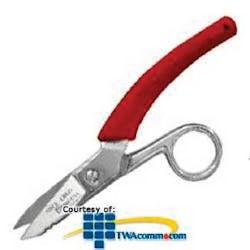Ergonomics in the Home ...
Hand and musculoskeletal pain is the bane of every dentist’s existence. We try to avoid muscle aches and pains by using proper posture, instrumentation techniques, ergonomic instruments, and periodic stretching at work. Nevertheless, pain still plagues us. We forget that the tasks we perform at home such as cleaning, cooking, home repairs, and caring for children also contribute to musculoskeletal aches and pains over time. Therefore, we must consider the cumulative effects of our work-related and non-work-related risk factors to prevent hand and musculoskeletal pain.
Ergonomics in the kitchen
The motions involved in cutting, chopping, stirring, and picking up pots and pans involve static grasps on kitchen utensils with the fingers bent and the wrist deviated toward the little finger. This deviated, static position creates strain on the flexor tendons in the hand and creates pressure across the wrist. To minimize strain, we strive to:
- keep the wrist straight;
- minimize the force requirements of the task; and
- use our strongest muscles to accomplish the task.
Many ergonomic kitchen tools are designed with longer, larger handles to distribute pressure over a larger area of the hand and keep the wrist straight. Ergonomic scissors (Fig. 1) are designed with a handle that is extended through the palm and rubber-coated with padding. Ergonomic knives (Fig. 2) incorporate a pistol grip, a vertical handle that places the wrist in neutral and allows the arm muscles to provide the cutting motion and strength. Ergonomic peelers have a large-diameter, padded handle that eliminates hard edges and provides a larger gripping surface (Fig. 3). Table 1 summarizes further recommendations to make cooking more comfortable and less taxing on the hands and body. The OXO brand of kitchenware is designed to minimize hand forces and awkward postures.
Ergonomics of cleaning
Cleaning bathrooms, floors, and windows also places us in awkward postures and requires that we use high hand forces to remove dirt and grime. Cleaning bathrooms requires frequent bending, kneeling, and scrubbing with a clenched hand. Cleaning windows requires repetitive arm motions above the shoulder. Suggestions to reduce the risk factors include using:
- extended handles on brushes or sponges to minimize forward bending at the waist or excessive reaching over one’s shoulder;
- hand mitts (finger extended) with an abrasive sponge to minimize static flexion of the fingers; and
- a cleaner to prepare the surface prior to cleaning (to minimize difficult scrubbing).
Ergonomics of laundry
Washing clothes exposes us to risk factors for low back pain as we reach into the washing machine to remove wet clothes and place them in the dryer. Forward bending at the waist with twisting increases disc compressive forces at the spine which may aggravate a low back injury. By addressing home layout, equipment design, and body mechanics, the risk of injury through laundering can be minimized.
Washer design - Front-load washers are more ergonomically friendly than top loaders because they minimize the need to twist the spine while transferring clothes (as long as a person kneels and laterally transfers clothes from the washer to the dryer). A dryer whose door opens on the opposite side from the washer eliminates the need to step around the dryer door to deposit clothes.
Body mechanics - The proper body mechanics for removing wet laundry from the washer include:
- positioning your feet shoulder-width apart and knees slightly bent;
- bracing your knee on the front of the washer or extending your leg backward to support the lower back;
- using your hand to support the weight of your upper body on the washer; and
- removing only a small amount of wet laundry at a time.
In short, we need to consider the myriad of tasks we perform at home in the overall prevention of hand and musculoskeletal pain. Many options for proper hand use, body mechanics, and ergonomic design of equipment exist, if we take the time to use them.
Martha J. Sanders, MA, MSOSH, OTR/L
Sanders is an assistant professor of occupational therapy at Quinnipiac University in Hamden, Conn. She has worked with dental practitioners for more than 15 years in rehabilitation and prevention of musculoskeletal disorders. Sanders is the editor of a textbook on ergonomics, “Ergonomics and the Management of Musculoskeletal Disorders.” E-mail her at [email protected].




